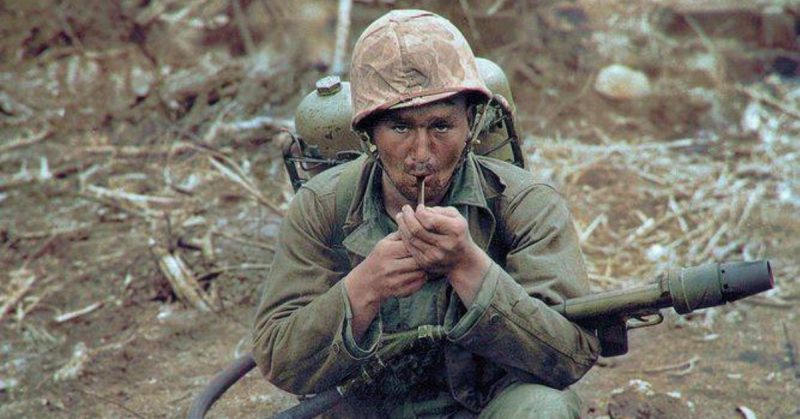The flame-thrower came of age during World War One where it was pioneered by the German Army.
Though regarded as a very inhumane and cruel weapon, it was also seen as being very effective at clearing trenches, buildings, and fortifications, especially bunkers.
By the end of the war, it was in widespread use among combatant nations.
By World War Two you there were two types of flame-thrower delivery systems:
1) Motorized vehicles, normally a tank converted to carry a flame-thrower, like the Churchill Crocodile tanks or the Italian L3 tankettes.
2) The other was a man-portable version, which normally consisted of one or two cylinders strapped to the operator’s back. They were usually heavy and cumbersome but effective at short range.
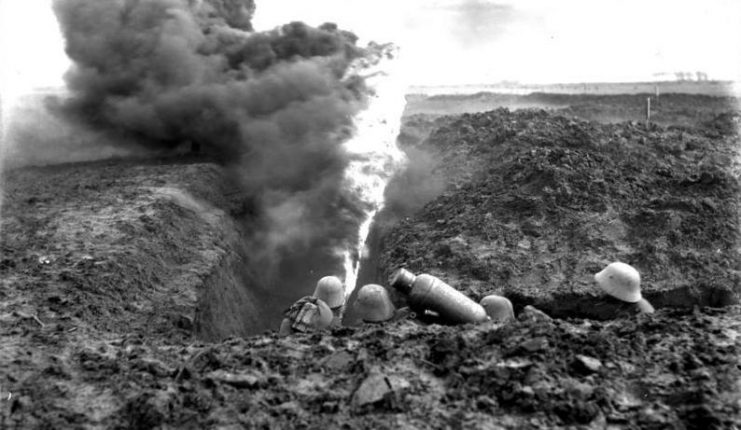
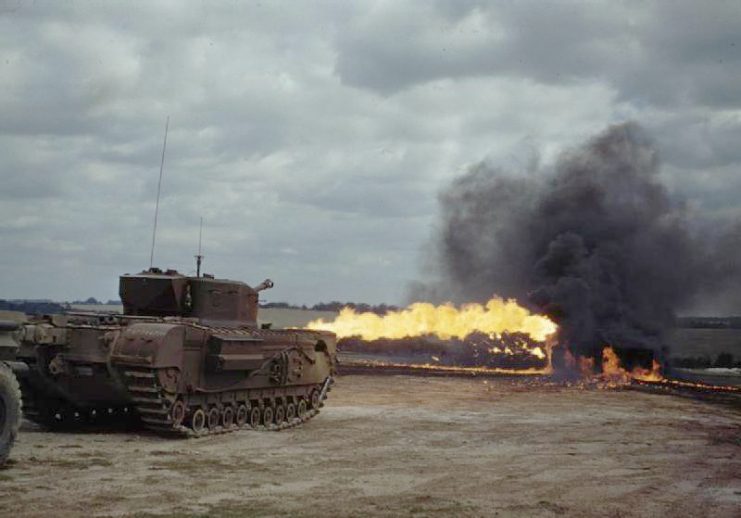
A question often asked is: do flame-throwers from WW2 explode when they are shot?
Well, to answer that question, first let’s set out some parameters.
The flame-thrower in question is being shot at by a typical weapon of World War Two: the standard U.S. service rifle, the M1 Garand.
Over five million Garands were made. It fires a .30 caliber round and for our scenario it is using the standard ammunition. For the sake of argument, our target is 100 feet (30 meters) away, just out of range of the average flame-thrower.
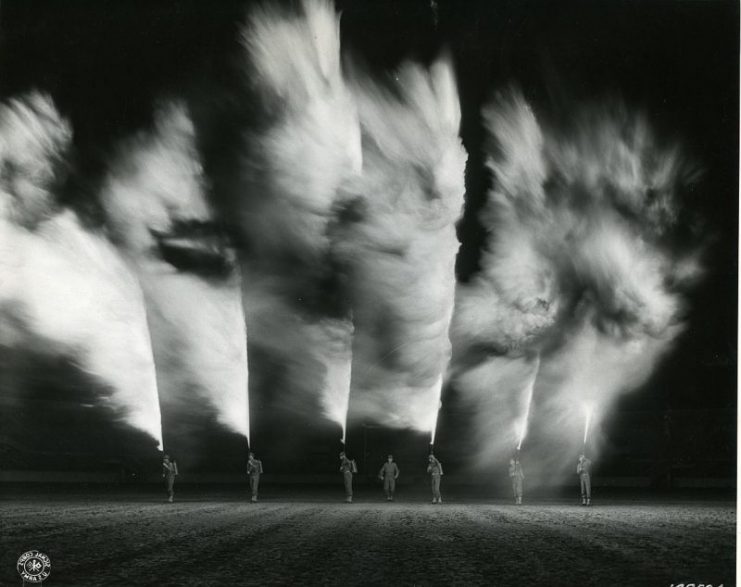
The Garand, with its muzzle velocity of 2,800 feet (853 meters) and an effective range of around 1,500 feet (457 meters) should be able to hit our target easily enough and with some significant kinetic force.
In relation to the type of flame-thrower to be used in our experiment, there were two different common versions: the American M2 from the Allied inventory, and the German Flammenwerfer 35.
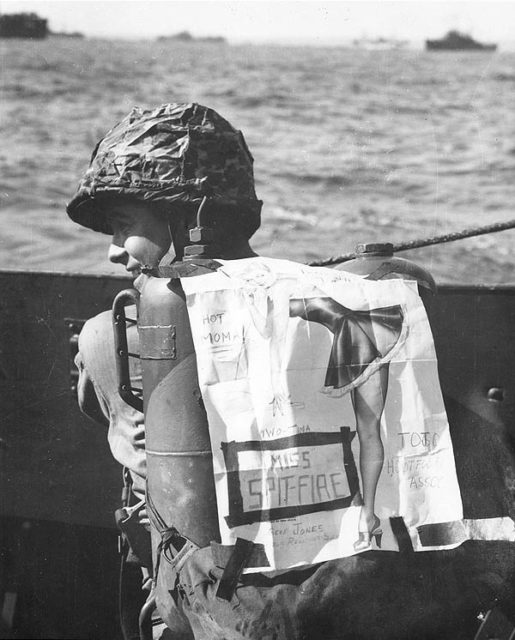
M2 Flame-thrower (US- First introduced in 1943)
- Weight: 68lbs
- Effective Range: 65ft
- Fuel Capacity: 4 Gallons
The American M2 was a one-man flame-thrower consisting of two cylindrical fuel tanks containing gasoline.
On top was a smaller tank that was pressurized and contained non-flammable nitrogen gas or air. A hose connected the nitrogen/air tank to the fuel cylinders. A longer hose led to a nozzle with an ignition system and trigger, used by the operator to fire the weapon.
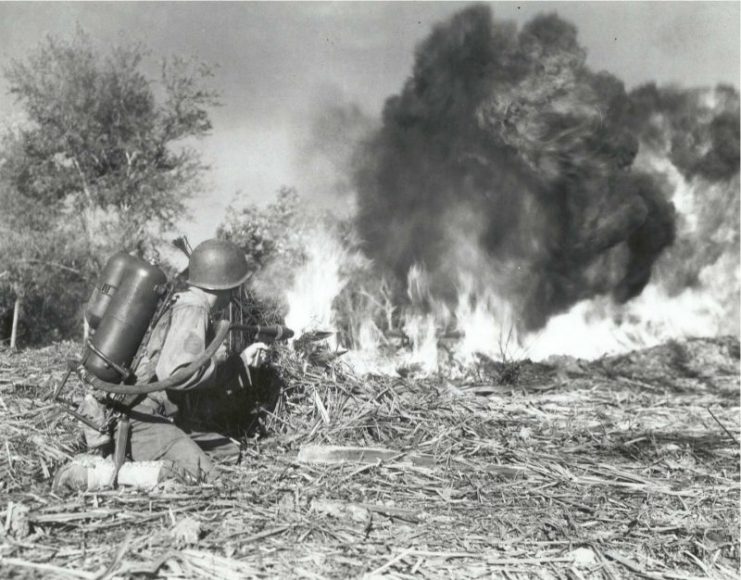
Flammenwerfer 35 (German- Introduced in 1935)
- Weight: 79lbs
- Effective Range: 80ft
- Gallon: 3 Gallons
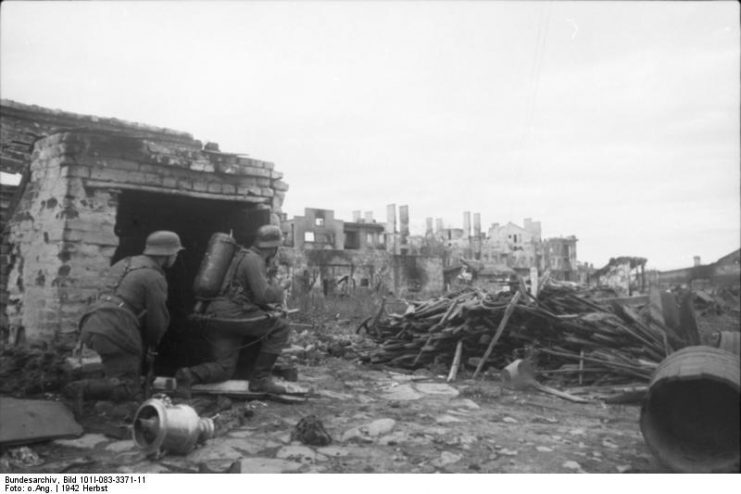
The FmW 35 was a one-man German portable flame-thrower. It consisted of a single cylindrical fuel tank containing three gallons of gasoline and tar mix, with a hose and trigger operated nozzle.
Piggybacked to the fuel tank was the nitrogen propellant in a small pressurized tank. It was significantly heavier than its counterparts, being 11lbs heavier than the American M2 and 22Ilbs heavier than the Japanese Type 93.
So it had the same basic layout as the American M2 flame-thrower. The propellant was fed into the fuel tanks then the pressurized mixture was forced through a heavy duty hose to an ignition built into a nozzle.
The operator could then aim at a target and activate the weapon with the trigger.
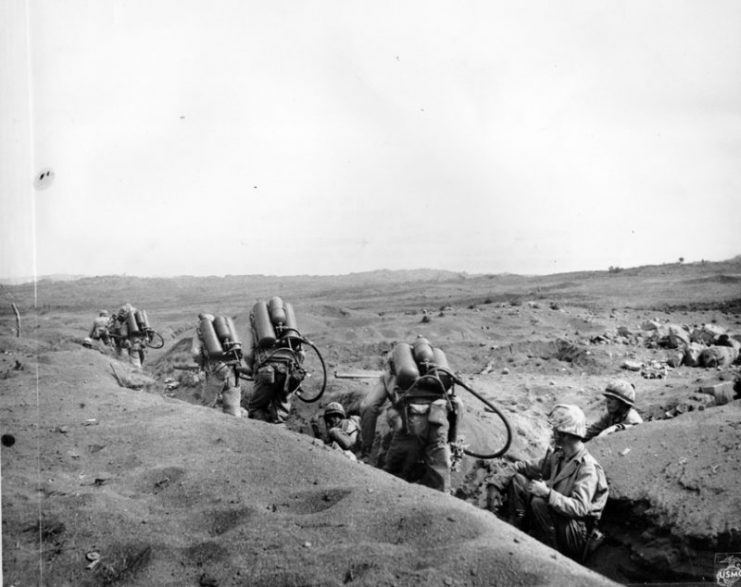
Conclusion:
So we have established that the two weapons are sufficiently similar that being hit by a bullet would have the same outcome.
If the Garand bullet hit the fuel tanks, it might not necessarily penetrate the thick metal wall of the cylinder. But if it did punch a hole through it, the most likely result would just be fuel leaking out.
Since there is no ignition event, there would be no explosion.
Although a bullet might be very hot for a few moments after it is fired (due to the friction and the explosion that propelled it in the first place), its temperature would be far too low to ignite anything.
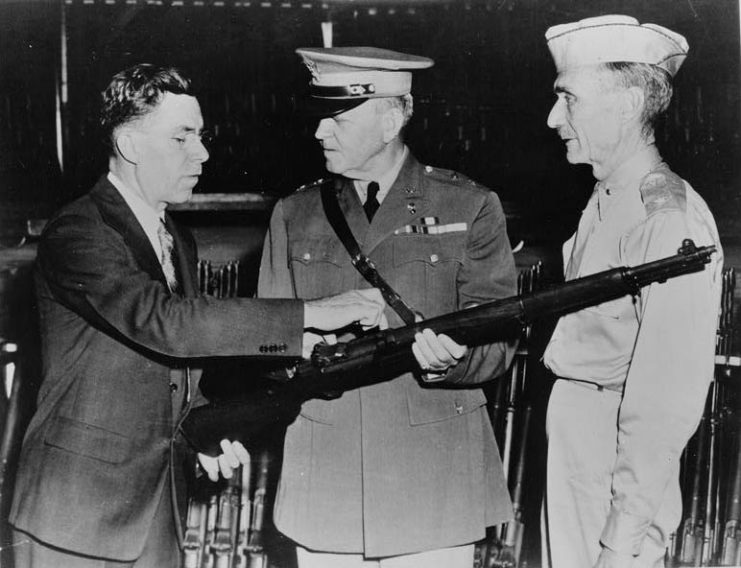
And in the very unlikely event of the bullet causing a spark as it ruptured the metallic fuel tank, that the spark might not be sufficient to reach the spontaneous ignition point of gasoline which is just over 530 Degrees Fahrenheit (which is around 80 Degrees Fahrenheit higher than paper).
Of course, if the weapon did by chance explode, it would do so with devastating effect, especially if the tanks were full of gasoline. The most likely outcome is that it would kill or seriously injure the flame-thrower operator.
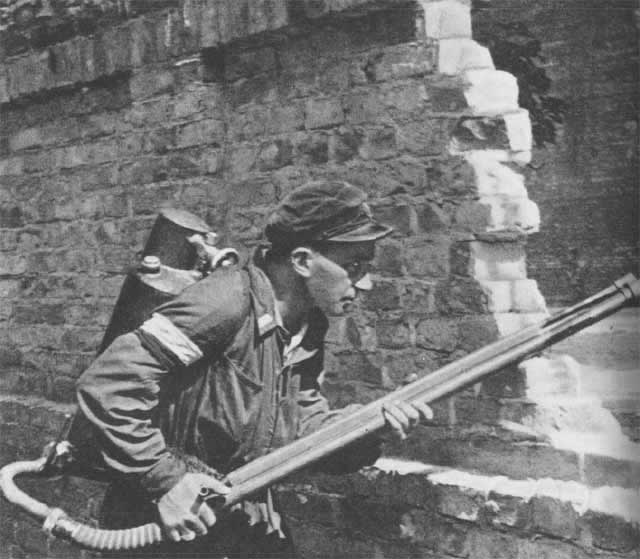
But the real danger was from the nitrogen pressurized tank. Though nitrogen is non-combustible, if the tanks were penetrated it would explode much like an aerosol can.
The force of the explosion and the ensuing shrapnel could easily kill the operator of the flame-thrower.
Of course, the real game changer would be if our Garand-armed shooter was using armor-piercing incendiary rounds such as the .30-06 Springfield M14 cartridge.
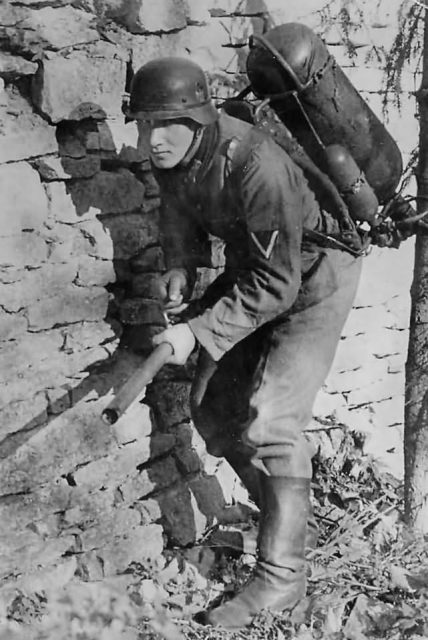
This would result in it easily penetrating any of the tanks and would almost certainly ignite the gasoline as the cartridge is designed to be used against lightly-armored, flammable targets.
So the answer to the question is that it is possible but difficult to cause a flame-thrower to explode using small-arms fire unless you have a lot of luck or special ammunition.
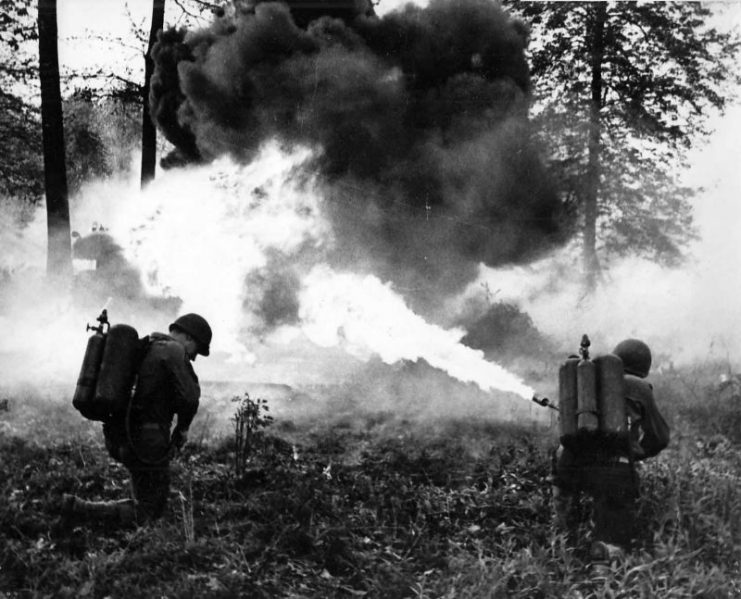
But the real danger to the flame-thrower operator was that he had to get within a relatively short range of his target to use his weapon, giving the opposition ample time to shoot at him first.
What made operators even more vulnerable was that they were slow-moving targets and had to stand up to use their weapon. Operators also found it more difficult to utilise cover due to the nature of the weapon.
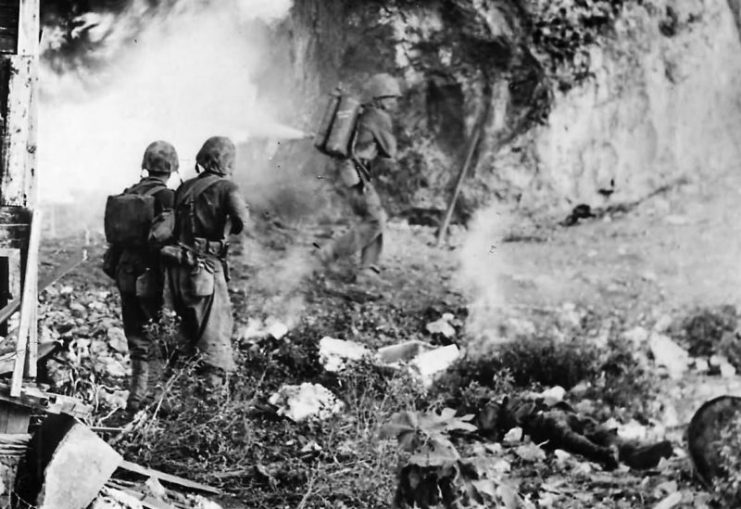
Want War History Online‘s content sent directly to your inbox? Sign up for our newsletter here!
However, in the right situation, flame-throwers could be devastatingly effective and psychologically terrifying, often clearing bunkers that seemed only moments before to be totally impregnable.
And it is worth noting that flame-thrower operators were hated so much by all sides that they were rarely ever taken prisoner.
